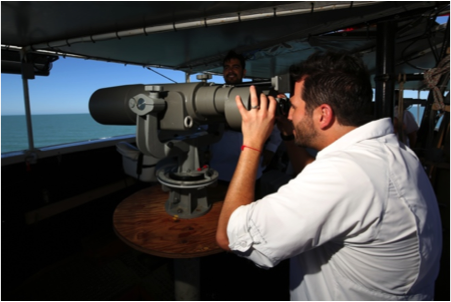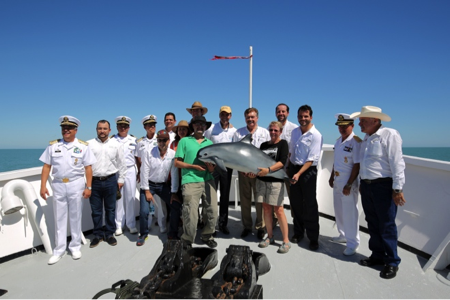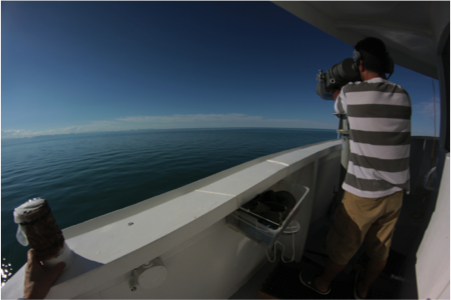(Shared from the COMPASS blog post)
COMPASS is proud to support an impressive group of reporters, editors, and producers in attending the Society for Marine Mammalogy’s 21st Biennial Conference on the Biology of Marine Mammals: Bridging the Past Toward the Future this coming December. The meeting is expected to bring 2,500 marine mammal scientists and practitioners to San Francisco, CA, for workshops, plenaries, and presentations on topics of importance to marine mammalogy, ranging from climate and changing oceans to effective marine spatial planning. Browse the fellows’ websites for some powerful science and environmental reporting, and easily connect with them via our Twitter list here.
The journalist fellows will be woven into the conference in a variety of ways, to help them connect and interact with the marine mammal scientists and experts. The fellows will first be introduced at the “How to Make Your Science Matter” plenary panel, moderated by Nancy Baron, COMPASS Director of Science Outreach, and comprised of:
• Jane Lubchenco, U.S. Science Envoy for the Ocean
• Nick Gales, President of the Society for Marine Mammalogy
• Marcia McNutt, Editor-in-Chief, Science
• Charles Littnan, Lead Scientist, Hawaiian Monk Seal Research Project at NOAA Fisheries
• Ken Weiss, Independent Journalist, Pulitzer Center on Crisis Reporting
• David Malakoff, Deputy News Editor, Science Magazine
COMPASS will facilitate the fellows’ meeting and mingling with scientists at the reception after the plenary session.
On Tuesday, at a COMPASS media mixer, we will help the fellows broker connections to pursue their story ideas and arrange for “beat dinners” with experts on their topics of interest. The fellows are also invited to provide their perspectives on what makes a great story during our lunchtime communications workshop on Tuesday, “One Minute to Impress: How to Sell Your Science To Anyone.”
SMM 2015 COMPASS Journalist Fellows
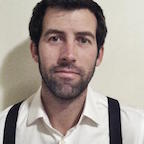 Matthew Berger
Matthew Berger
Freelance – @matthewoberger
Matthew Berger has covered science and environment issues for the past six years at a number of local, national and global outlets. He has also covered global development, global health and foreign policy extensively during his reporting career, based primarily out of Washington, D.C. He has been a staff reporter at Bloomberg, Agence France-Presse, Inside Climate, Inter Press Service, and the Grand Junction (Colo.) Sentinel and has contributed to Nautilus, IntraFish, Reuters, and a number of smaller outlets. Matthew focused on the political and economic questions of science and environment issues for most of his early career, particularly those related to the oceans, and holds a master’s in political economy from the London School of Economics, where he focused on fisheries policy, and a graduate certificate in marine resource management from Oregon State. He is currently based in Portland, where he is focusing on questions of environmental ethics and identity in his freelance reporting, including a number of marine mammal-related stories.
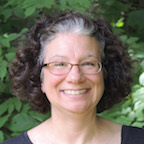 Madeline Bodin
Madeline Bodin
Freelance – @MadelineBodin
Madeline Bodin has been writing about conservation science for over 20 years for publications such as Yale Environment 360, Nature News, JSTOR Daily, Scientific American, Popular Mechanics, Discover, The Boston Globe, and Newsday. She lives with her family in Vermont. As a child, she treasured a bottlenose dolphin plush toy named Panama.
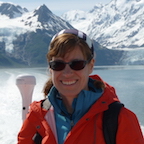 Lesley Evans Ogden
Lesley Evans Ogden
Freelance – @ljevanso
Lesley is a freelance science writer-producer based in Vancouver, Canada. After scaling the ivory tower, turning a lifelong fascination with birds into a PhD and postdoctoral research in ecology, she parachuted into the wilds of science journalism. During that career transformation she was educated and inspired at the Banff Science Communications Program and the Santa Fe Science Writers Workshop, and spent a year working for the Science Media Centre of Canada. Now a regular contributor at BBC Earth, Natural History, New Scientist and BioScience, her work has also appeared in venues including Mosaic, CBC, Science, and Nature. Lesley’s enthrallment with marine mammals was cemented over a decade ago by a close encounter with a pod of orca whales while kayaking through thick morning mist in Johnstone Strait, BC. When not working on her next story, Lesley enjoys trail running, hiking, cycling, canoeing, kayaking, and spending time with her family, preferably in the outdoors. She shares her workspace with a budgerigar poet.
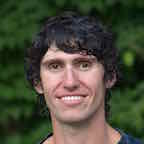 Ben Goldfarb
Ben Goldfarb
High Country News – @ben_a_goldfarb
Ben Goldfarb is a correspondent for High Country News, a magazine that covers natural resources throughout the American West. His freelance writing has appeared in Scientific American, Pacific Standard, Earth Island Journal, Hakai Magazine, and many other publications. In 2013 Ben received a Masters of Environmental Management from the Yale School of Forestry and Environmental Studies. Read his work at www.bengoldfarb.com.
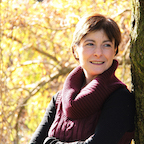 Isabelle Groc
Isabelle Groc
Freelance – @isabellegroc
Isabelle Groc is a Vancouver-based freelance writer and photographer, focusing on environmental science, wildlife natural history and conservation, endangered species, marine mammals and ecosystems. Her stories and photographs have appeared in National Geographic News, BBC Wildlife, Canadian Wildlife, New Scientist, and many other publications. She has a master’s degree from Columbia University Graduate School of Journalism and a Master in City Planning from the Massachusetts Institute of Technology. With her dual background in photojournalism and urban planning, Isabelle brings a unique perspective in documenting the impacts of human activities on threatened species and habitats. She is a fellow of the Explorers Club.
 Melati Kaye
Melati Kaye
Freelance – @tadipagi
Melati Kaye is an environmental journalist based in Southeast Asia. She has lived in and reported on fishing communities along the Pacific Rim on a range of subjects including cyanide fishing, sea gypsies and coral-stifling mine runoff. Her work can be found at Mongabay.com, Al Jazeera, Indonesia’s national newsweekly Tempo, and various American magazines.
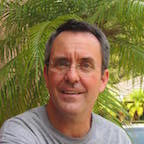 Paul Kvinta
Paul Kvinta
FreelancePaul Kvinta writes about the environment, wildlife, and science for several magazines including Outside, Popular Science, and Men’s Journal. He has also written for the New York Times Magazine, National Geographic Adventure, GQ, National Geographic Traveler, and Fortune, and he has read his essays on National Public Radio’s Weekend All Things Considered. He has won a number of awards, including the Daniel Pearl Award, and has been a finalist for the National Magazine Award. In 2005 his story on human-elephant conflict in India, “Stomping Ground,” appeared in The Best American Magazine Writing. He has been a Knight Journalism Fellow at Stanford University, and a Templeton Journalism Fellow in Science and Religion at Cambridge University in England.
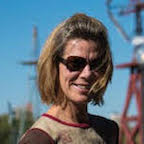 Susan Moran
Susan Moran
Freelance/KGNU – @susan_moran
Susan Moran is a freelance journalist living in Boulder, Colo. She writes about biodiversity conservation, energy, science, agriculture and other areas for Popular Science, Discover, the New York Times, The Economist, Science News for Students and other publications. She also contributes as a host and producer to KGNU community radio’s science show, “How On Earth.” Susan taught journalism as an adjunct instructor at the University of Colorado-Boulder for seven years. She was a Knight Science Journalism Fellow at MIT in 2009-1010, and a Ted Scripps Fellow in Environmental Journalist at the University of Colorado in 2001-2002.
 John Platt
John Platt
Freelance – @johnrplatt
Freelance journalist John R. Platt covers endangered species, wildlife trafficking and related environmental topics for Scientific American, TakePart, Vice, Mother Nature Network and other publications. His work earned the Animal Action Award from the International Fund for Animal Welfare in 2012 and was recently a finalist for the L.A. Press Club Awards. John lives in Portland, Oregon.
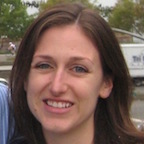 Elizabeth Preston
Elizabeth Preston
Freelance – @Inkfish
Elizabeth Preston is a freelance science writer and editor based in the Boston area. Her writing has appeared in Slate, the Boston Globe, Jezebel, Nautilus, Hakai, National Geographic, and others. Her science news blog, Inkfish, is published by Discover. Previously, Elizabeth was the editor of the children’s science magazine Muse.
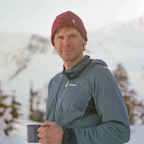 Christopher Solomon
Christopher Solomon
Freelance – @chrisasolomon
Christopher Solomon is a contributing editor at Outside and Runner’s World magazines and a frequent writer for the New York Times who has written for publications ranging from Popular Mechanics to Scientific American to the Times Sunday Magazine. He writes frequently about science, the environment and travel. His work has been featured in the anthology The Best American Sports Writing and twice in The Best American Travel Writing and been an Honorable Mention for The Best American Science & Nature Writing. He lives in Seattle.
 Michael Werner
Michael Werner
Werner Media – @mwerner1
Michael is an award-winning filmmaker and journalist. His work has been featured in / by: The PBS NewsHour, HBO Films, Showtime, The New York Times Company, QUEST, CBS This Morning, MSNBC, The Associated Press, PBS SciTech Now, Nat Geo Wild, EarthFix, Voice of America TV, The World Channel, Gawker Media, The U.S. Olympic Committee, Yale University Press, Media Storm, and the Cannes International Film Festival. Michael won the 2014 American Association for the Advancement of Science Journalism Award in the television category and has won Emmy awards for producing, photography and editing. In addition, he is a Logan Science Journalism Fellow, a Woods Hole Science Journalism Fellow, an MBL Arctic Fellow and a Corporation for Public Broadcasting International Fellow.
 Allie Wilkinson
Allie Wilkinson
Freelance – @loveofscience
Allie Wilkinson is a Washington, D.C.-based freelance journalist and Forbes contributor covering science, technology and the environment. Her writing has appeared in various print and online publications, including the New York Times, Wired, Scientific American, Popular Science, and Discover, among others. Her work has also been anthologized in The Best Science Writing Online. In 2014, she was a fellow of the Metcalf Institute for Marine and Environmental Reporting. Prior to earning her M.A. in journalism from Hofstra University, she studied marine biology and conservation.
 Zheng Yu
Zheng Yu
Xinhua News Agency
Zheng Yu is senior science writer and columnist at Xinhua News Agency, a Beijing-headquartered multimedia news group, covering areas such as environment and ecology, energy, natural preservation, as well as innovations and emerging technologies. He authored three books and lectures at universities.

